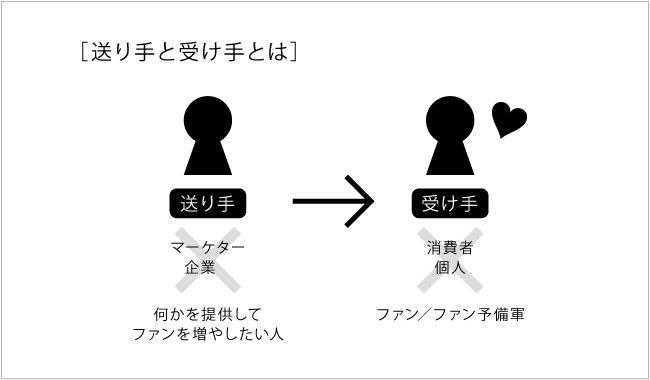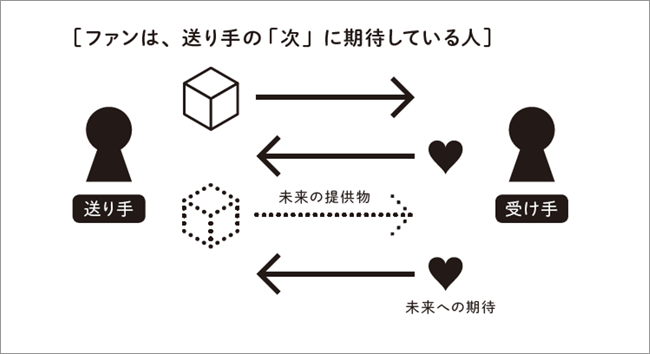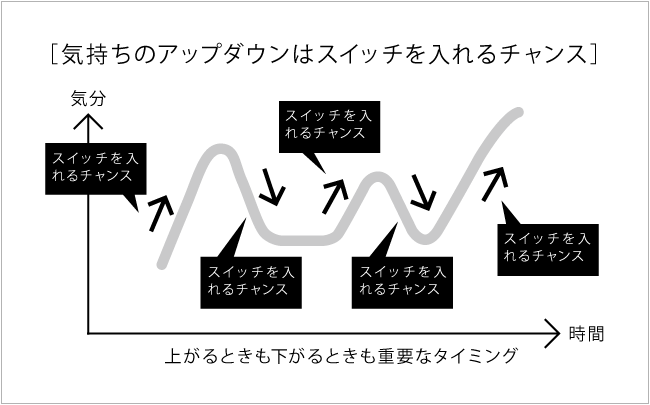Nice to meet you. My name is Natsuko Ishihara.
"Fan marketing"—a term often featured in Web Dentsu Inc. News.
For advertisers and marketers facing the challenge that traditional sales methods don't sell and conventional advertising doesn't resonate, it's a term that's been frequently heard for several years now as a strategy to connect with customers and sustain sales. In this series, I'll explain this fan marketing strategy, born from my own experience as a fan of a certain artist.
The 6 Switches to Create "Obsessive Love"
In the world of communication, we often tackle challenges like how to communicate differently with fans versus non-fans, and how to build and manage fan communities.
While I usually tackle these challenges from a creative or planning perspective,
One day, it hit me.
Could it be... that I myself am a successful case study in fan creation...!
Because I myself have been a fan of a certain artist for over 20 years. I keep going to their live shows, never dropped out of the fan club, and regularly buy CDs (now digital downloads) and merchandise. I'm practically a walking embodiment of "obsessive love," enough to make my friends roll their eyes.
Analyzing my own history calmly, I began to see the moments that heightened my obsession through various experiences. "Ah, that's when I got hooked," or "That comment really stuck with me."
I then wondered if this phenomenon, beyond my personal experience, could be broadly applied to universal principles of marketing and communication. That's what I compiled into the book "Strategy of Obsession."
The book uses manga to casually introduce my personal history of obsession (those "switch-flipping" moments), then distills six switches into "strategies," explaining them with the latest examples. But in this Web Dentsu Inc. column, I'll digest and introduce the "switches that ignite the fan's heart," derived from the fan's perspective.
Without further ado, here are the six switches...
1. The "Connection Switch" that creates touchpoints
2. The "Special Treatment Switch" that deepens obsession
3. The Word Power Switch: Maintaining Obsession
4. The "Comradeship Switch" that prevents dropouts
5. The "Personal Connection Switch" triggered by fans
6. The "Spread Switch" that increases fans
These switches don't necessarily activate in chronological order, but I'll explain each one as a general sequence for building a fanbase.
What exactly is a "fan"?
But first, a few points before we get to the initial "Connection Switch."
The sender (brand, service, person, content, etc.) and receiver (fan) aren't necessarily in a company-consumer relationship. They could be individuals, and paying money doesn't automatically make someone a fan.
So what exactly is a fan?
I define them as "people who look forward to the sender's 'next' offering."
For both sender and receiver to maintain a long-term, happy connection, it's crucial not just that past products or works were good, but that there's a future bond. For example, whether it's a musician, hairstylist, or food manufacturer, it's not just about hearing "I like you," "That was great," or "It was delicious." It's about fans saying, "I'm looking forward to the next one," or "I'll be back." This "expectation for the next time" effectively connects sender and receiver, enabling the sender to keep creating new value.
How to Activate the "Connection Switch" to Create the Initial Touchpoint
Let's get back to the main topic.
First, when building a fanbase, you might wonder, "How do I create that initial connection?"
If you want to capture fans who will love you for the long haul, activate the "connection switch."
This means aligning with the subtleties of the heart—specifically, aligning with the timing of emotional ups and downs. From the sender's perspective, it means "targeting" the moments when people experience emotional fluctuations.
From my personal experience, when I first encountered that music, it perfectly matched my struggles at the time and encouraged me through my low days (see the manga in the book for details). Listening to that music now brings back the feeling I had when I first got hooked, making me a bit sentimental...
It's often said that "selling products or services requires aligning functional or emotional value with customer needs." But you might wonder, "Why are emotional 'ups and downs' important?"
As mentioned earlier, fans and consumers aren't necessarily the same. While consumers can be captured by needs, fans require "passionate devotion." For this devotion tied to personal feelings, it's more important to feel "they understand me" or "they like me" than simply thinking something is convenient or good. There are countless convenient services and wonderful products in the world, but few that truly make you feel "they understand me."
And to truly feel convinced, things that are there for you when you're struggling (feeling down) or celebrating (feeling up) tend to leave a stronger impression. Sometimes, extreme moments actually make you appreciate something's goodness more. For example, wouldn't a plain old salted rice ball eaten right after returning from an overseas trip make you think, "Yes! This! This is it! I really do love salted rice balls the most!" and turn you into a fan? (It's an extreme example, though.)
When meeting fans, be sure to activate the "companion switch" at opportunities where your product or service is likely to be accepted.
That was the first installment on the "Accompany Switch." Next time, we'll explore how to increase the level of affection from fickle fans.

The book is now on sale! Details
here.









